Japan’s Trains
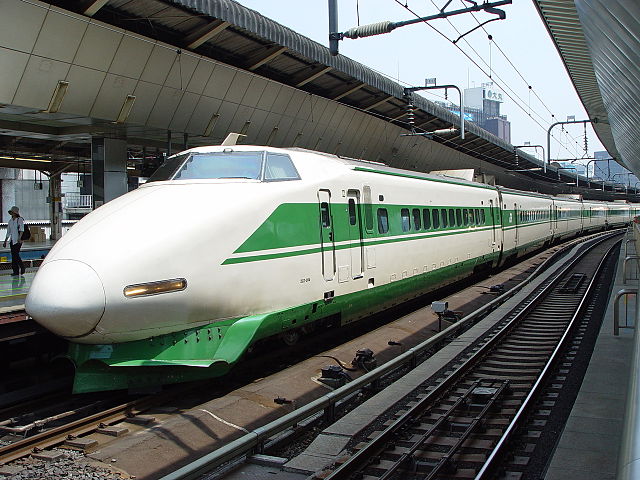
This 200 series Shinkansen is one of the oldest Shinkansen still in use, and runs on the Joetsu line between Tokyo and Niigata. The 200 series was introduced between 1982 and 1986, and has a stop speed of 240km/h. You can see from its appearance how Shinkansen got their popular nickname ‘bullet trains’. Below the nose is a built-in snowplough to help it cope with the cold and mountainous conditions of northern Japan.
Photo courtesy of DAJF and used under Creative Commons Attribution-Share Alike 3.0 Unported Licence.
Japan is famous the world over for it’s Shinkansen (commonly known as ‘bullet trains’ outside of Japan), but in reality they’re just one small part of a vast nationwide rail network. The diversity of Japan’s trains is as impressive as their legendary speed and efficiency – there’s everything from huge 15-car commuter trains to tiny light rail systems and fully-automatic monorails. Here’s just a selection of some of Japan’s most photogenic and noteworthy trains.
Airport Rapi:t
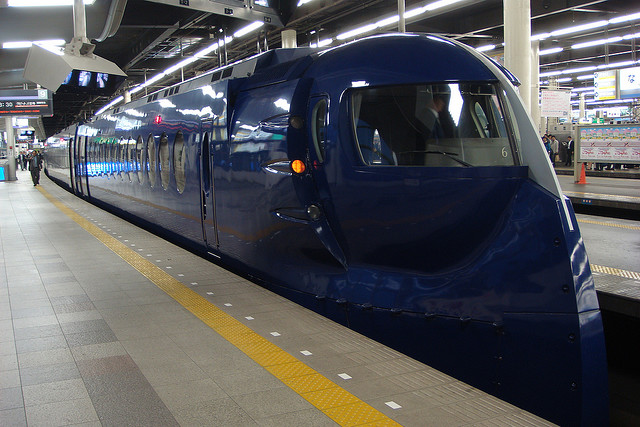
This is the first train that many visitors to Japan will see, as it runs between Kansai International Airport and Osaka. A special treat for linguists is that the name of this train service is ‘Rapi:t’, the transcription of the German word rapid in the International Phonetic Alphabet. Everyone else can just marvel at its quirky appearance.
Royal Train
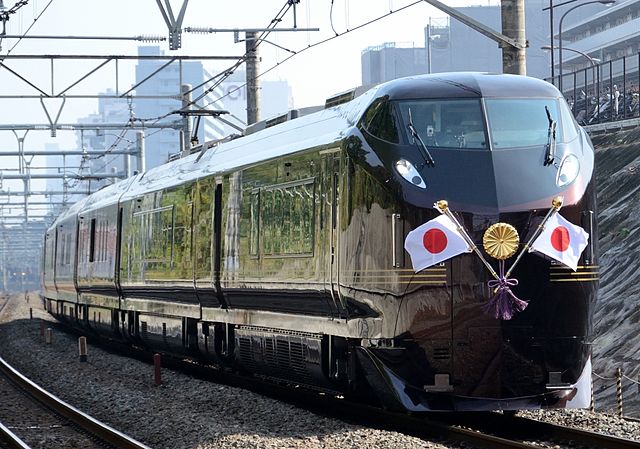
This is Japan’s imperial train, for the use of the emperor and other members of the royal family. Nowadays the emperor usually travels by air, road, or in a reserved carriage on a scheduled train, so it’s not often that he uses this train. The rest of the time it’s available for private charter, except for one carriage that’s exclusively for the use of the royal family. Here we see it approaching Nishi-Kokubunji Station on the Chuo Line in Tokyo in 2011, and the flags on the front indicate that the emperor is indeed on board.
Tilting Train
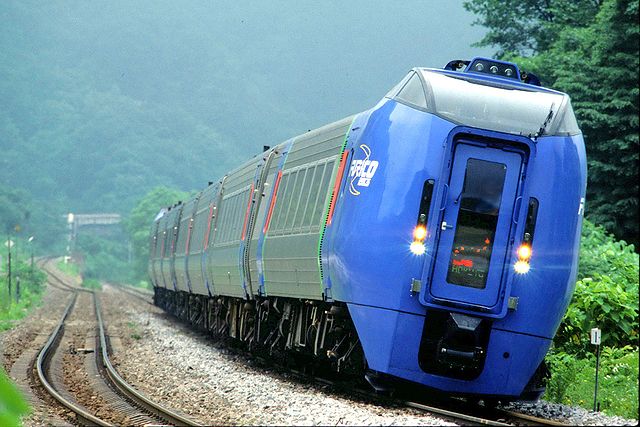
Many of Japan’s train lines twist and turn through mountainous scenery. This may make for scenic journeys, but certainly not for quick ones. To get around this problem, from 1972 onwards, Japan began using trains that tilt on bends, so allowing them to go faster without discomforting the passengers. This train is on a Super Hokuto express service between Hakodate and Sapporo in Hokkaido.
Enoden
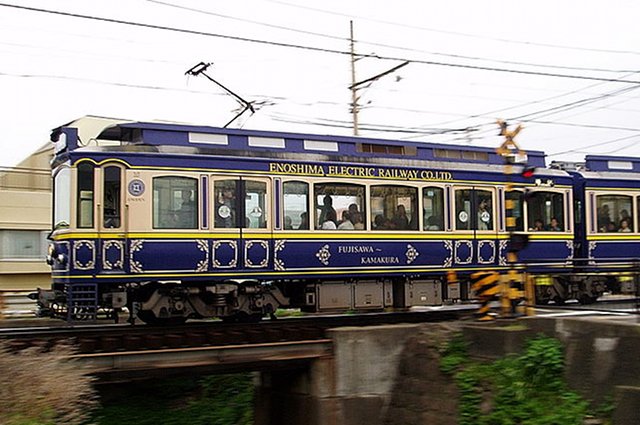
This train is on the Enoden Line, which serves 15 stations in the coastal cities of Kamakura and Fujisawa, on the fringes of Greater Tokyo. The train cars are very narrow, due to the line’s origins as a tramway, and the presence of many buildings very close to the sides of the track. This train may look old, but it’s actually a model introduced in 1997. The railway does still run some trains dating from the 1950s, but they don’t have this old-fashioned look to them. The whole Enoden system is single track, with trains only able to pass in some stations, but despite this the service is quite frequent, operating at regular 12-minute intervals. The line is popular with both day-trippers from Tokyo and local residents.
Shinkansen
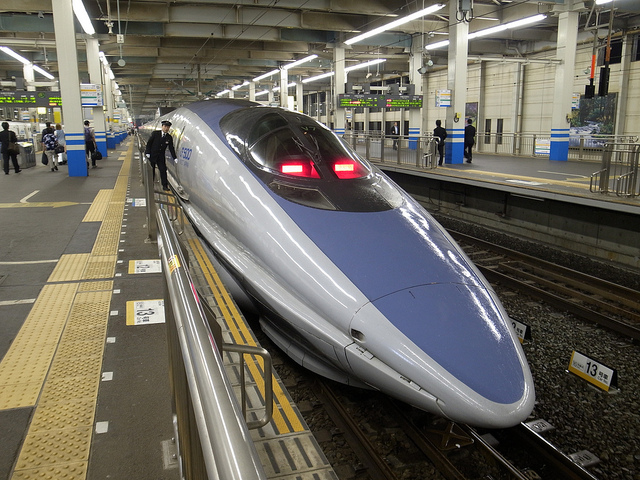
The presence of the conductor gives away just how huge the nose of this 500 Series Shinkansen is. Introduced in 1997, they operated at 300km/h on the Sanyo and Tokaido Shinkansen lines. When used in 16-car long formations, each train has space for 1,324 seated passengers. It’s now been superseded by the N700 Series, and so has been relegated to providing local services that stop at every station, but it remains one of the most elegant of all Shinkansen.
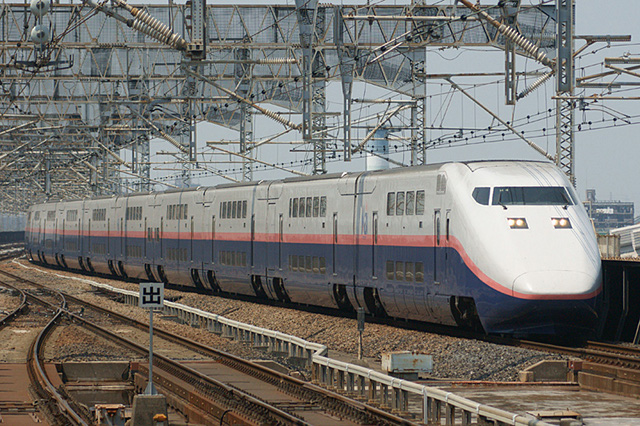
This chunky E1 Series Shinkansen may not look like a fast mover, but it can still manage 240km/h. These double-decker Shinkansen were introduced on the Tohoku and Joetsu lines to ease overcrowding caused by commuters travelling into Tokyo, although they also provide long-distance travel.
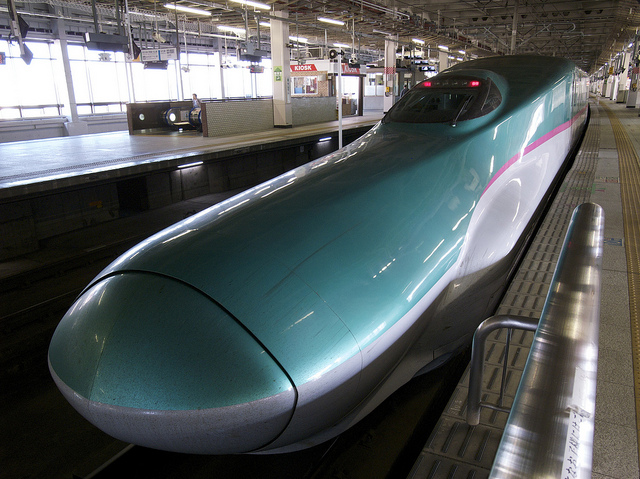
The long ‘duck-bill’ nose on this E5 Series Shinkansen is not designed to help it go faster – it’s there to minimise the noise caused by the train entering and exiting tunnels at high speeds. This train began its operations with services on the newly extended Tohoku Shinkansen Line to Aomori in March 2011. It’s capable of reaching speeds of 320km/h, but has so far been restricted to 300km/h in regular service.
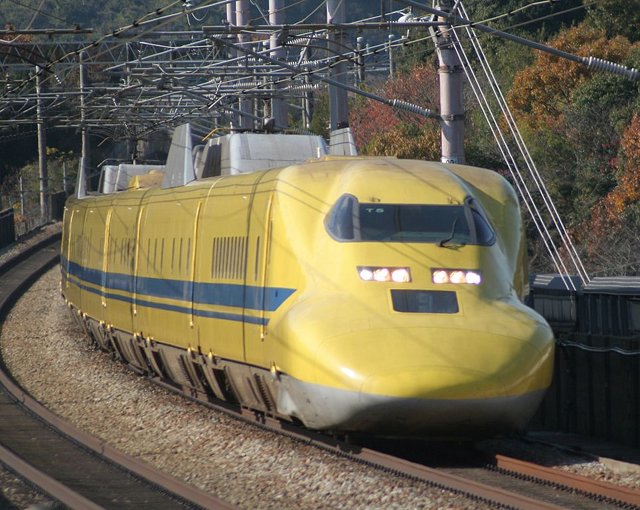
This might look like a passenger train, but it’s actually JR West’s ‘Doctor Yellow’ – a special train that monitors the condition of the track and overhead line. Doctor Yellows are not much different to regular Shinkansen, and operate at full speed when performing tests. This train is on the Sanyo Shinkansen Line between Okayama and Aioi.
Steam Train
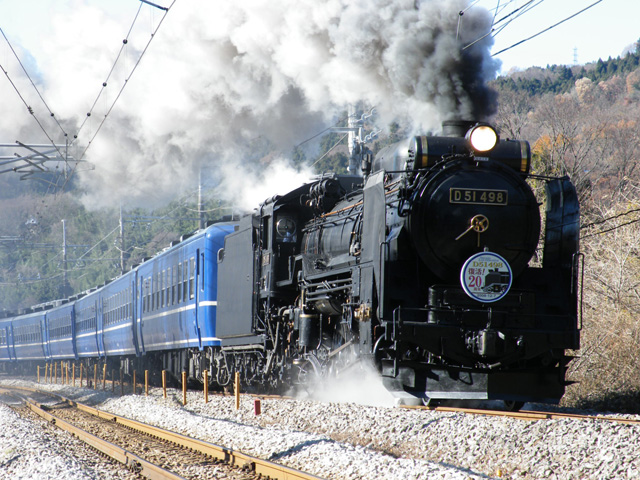
It wasn’t until 1975, more than ten years after the introduction of Shinkansen, that Japan withdrew its last steam trains from regular service. Now Japan has fourteen restored steam engines that are able to run on regular train lines. This is a D51 locomotive, a model dating from 1936, hauling a train on the Joetsu line in Gunma Prefecture in 2008. If you’d like to take a ride on one of Japan’s restored steam trains, check out this guide.
Decorated Train
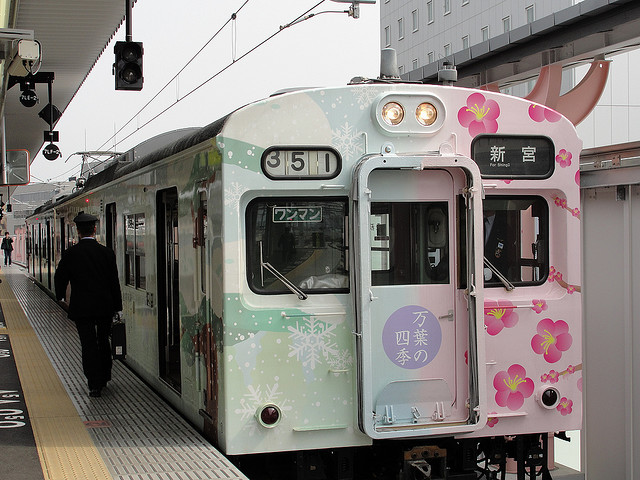
Despite the impression that this page might give, most trains in Japan are very ordinary and functional. To liven things up a bit, JR West held an art contest, and the winning designs were used to decorate a series a series of trains inside and out. This train, whose decoration depicts the four seasons, is in Nara.
Joyful Train
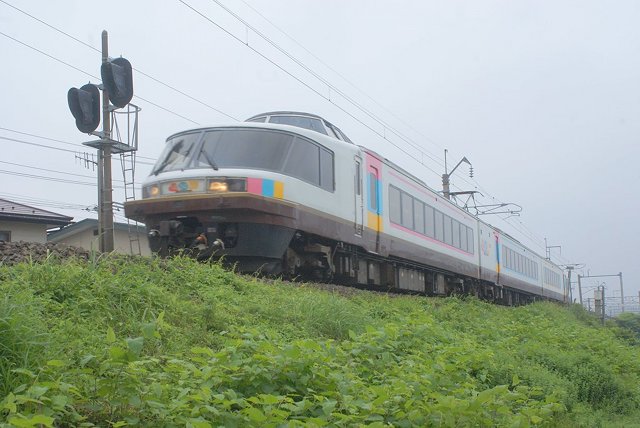
This colourful train is called NO.DO.KA, but you’re unlikely to get a chance to ride it unless you’ve got either a lot of money or very good connections, because it’s a ‘Joyful Train’. What that means is that it’s a special train for private charter, so that companies and other organizations can hire it for excursions. If you do think you might want to hire it yourself, get in touch with JR East.
Resort Trains
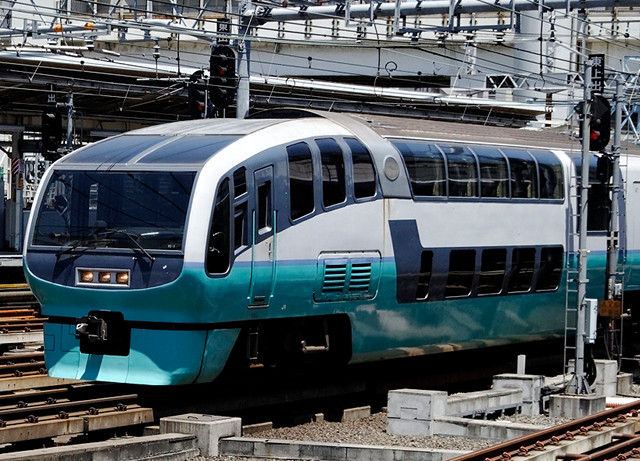
Holidaymakers in Japan are as likely to travel by train as by any other means of transport, so the railway companies go out of their way to put on special services for tourists. This is one of the most luxurious, a Super View Odoriko that shuttles between Tokyo and the hot spring resorts of the Izu Peninsula. It’s designed to give passengers the best possible view from the windows, and even has an on-board playroom for children.
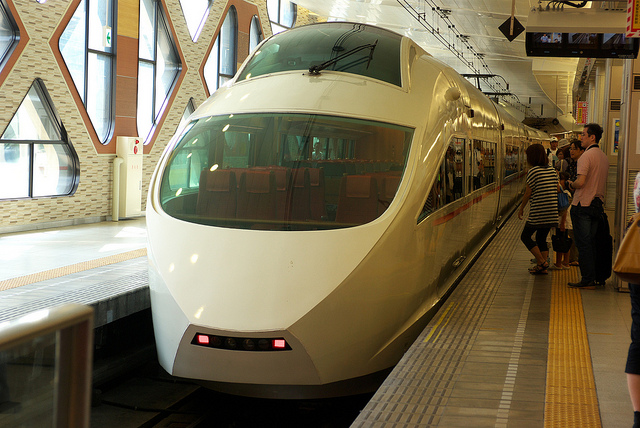
This is an Odakyu Railways ‘Romance Car’ train, so called because it serves the Hakone National Park, which used to be a popular honeymoon destination for Tokyo couples. (Nowadays Tokyoites are more likely to fly overseas, but the name has stuck.) The best seats are right at the front, as the driver lies down in his cab on the top of the train, meaning that passengers have an unobstructed view out of the front window.
Country Train
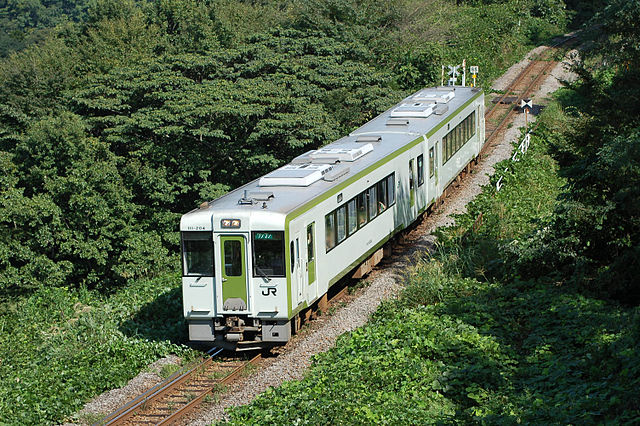
Japan has many minor lines in country areas, the majority of which are single track and carry few passengers. Here we see a diesel train on the Hachiko Line, on the fringes of the built up area surrounding Tokyo.
Road and Rail Train
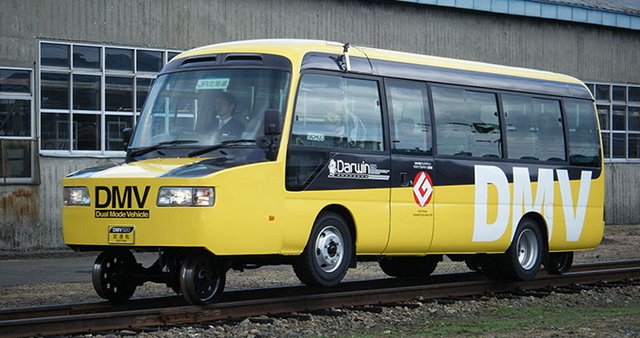
The Dual Mode Vehicle is the Hokkaido Railway Company’s solution to falling passenger numbers on many of its rural lines. It can reach destinations not on the rail network by lifting up its rail wheels and switching to roads. The DMV made its debut in 2007, and can switch between road and rail modes in just 15 seconds.
Monorails
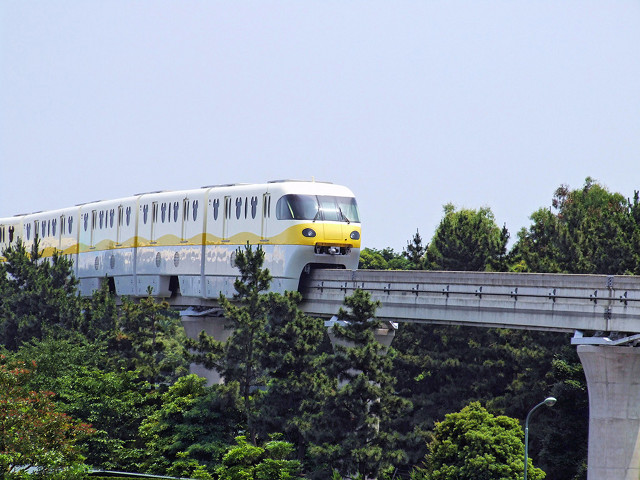
Japan has many monorails, serving towns and cities all around the country. If you take a close look at the windows, you’ll be able to see that this is the Disney Resort Line that takes people from Maihama Station to Tokyo Disney Land and Tokyo Disney Sea, via a one-way loop with four stations.
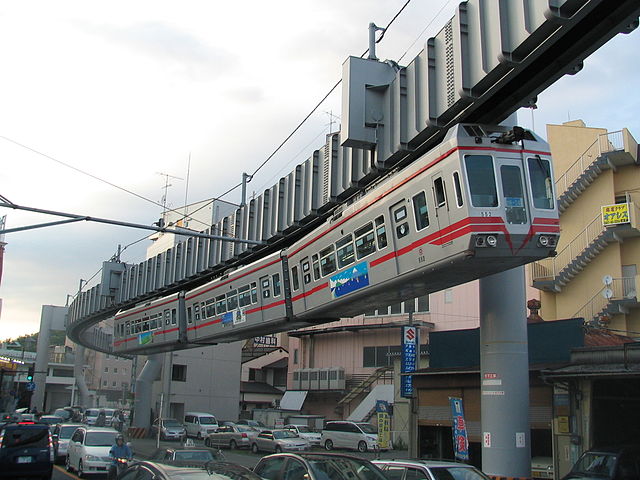
No I haven’t put this photo in upside-down. This is the underslung Shonan Monorail, which connects Ofuna Station in Kanagawa Prefecture with nearby residential areas and the popular seaside destination, Enoshima. The line has eight stations, and has been in operation since 1970.
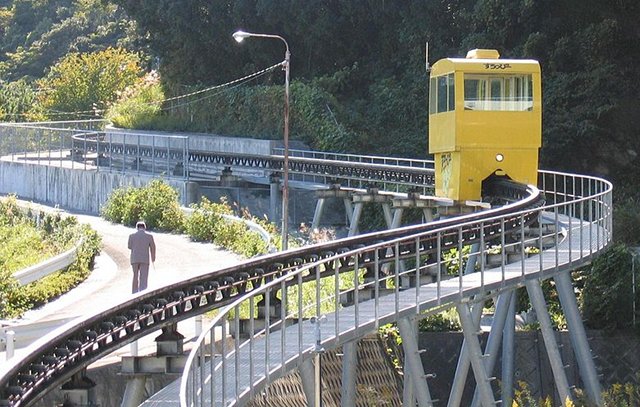
I’m really not sure if this is a train or not, but it runs on a rail so I decided to put it here. It’s one of Japan’s many ‘slope cars’, that serve to make people’s journeys up and down hills a bit easier. This one takes passengers from ground level up to a bus stop on an elevated highway in Naruto City, Tokushima. Named ‘Sloppy’, it opened in 2002, and runs at 10km/h along a 173 metre track, and can carry up to 20 people at a time. Best of all, it’s free!
Automated Guideway Transit
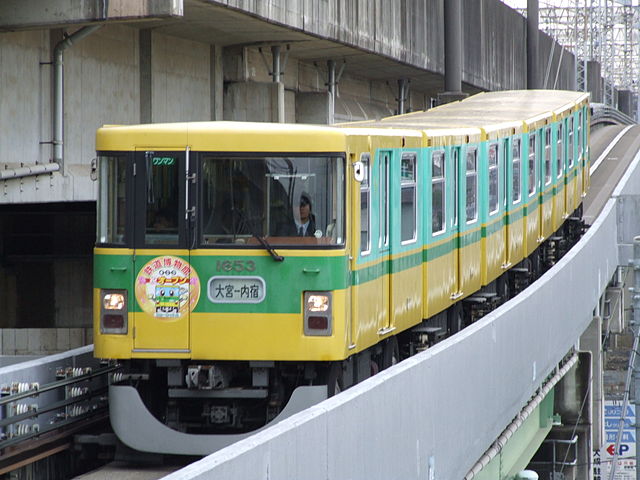
Purists might argue that this is not a train, as it has rubber tires and doesn’t run on rails, but it looks like a train, which is good enough for me. It’s an Automated Guideway Transit system (AGT), although as it has a driver it’s not as automated as some others that are fully automatic. This is the ‘New Shuttle’, a 13 kilometre line that opened in 1983. It runs northwards from Omiya Station, in the north of the built up area around Tokyo.
Sleeper Train
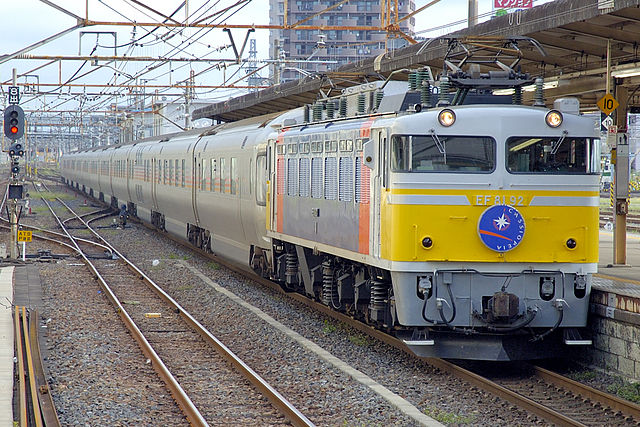
It might not look anything special from the outside, but this is Japan’s most luxurious train. It’s a deluxe sleeper train that runs between Tokyo and Sapporo every second day, a distance of 1,208 kilometres. Here it’s near the end of its journey, at Utsunomiya Station near Tokyo.
Freight Trains
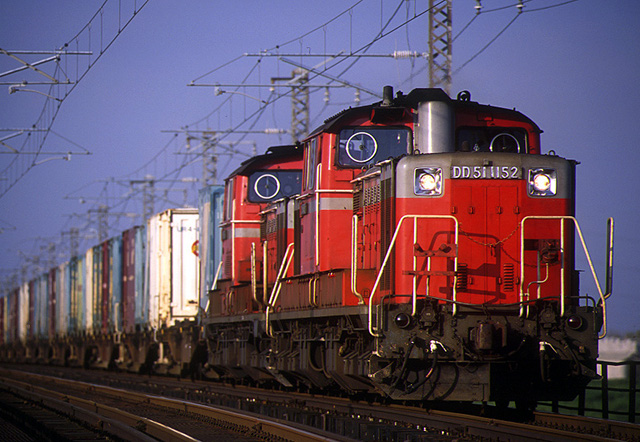
Rail transport in Japan isn’t limited to people – there are also many freight trains delivering goods all over the country. This train is on the Hakodate Main Line in Ebetsu on the northern island of Hokkaido.
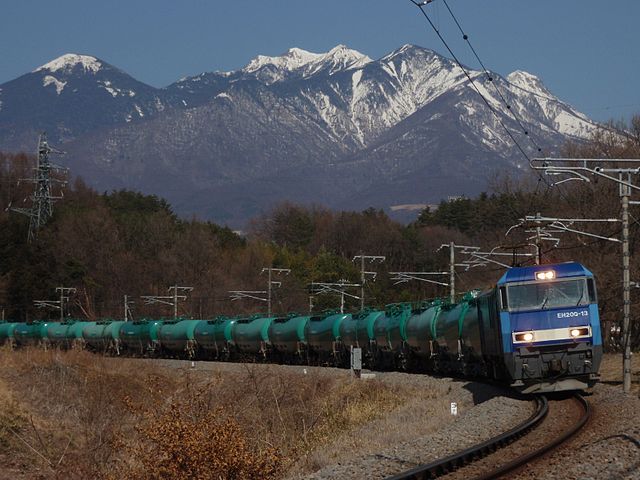
This tanker train is on a picturesque part of the Chuo Line in the northwest of Yamanashi Prefecture. The mountains in the background are part of the Yatsugatake Volcanic Group, one of which is currently active.
Funicular Railways
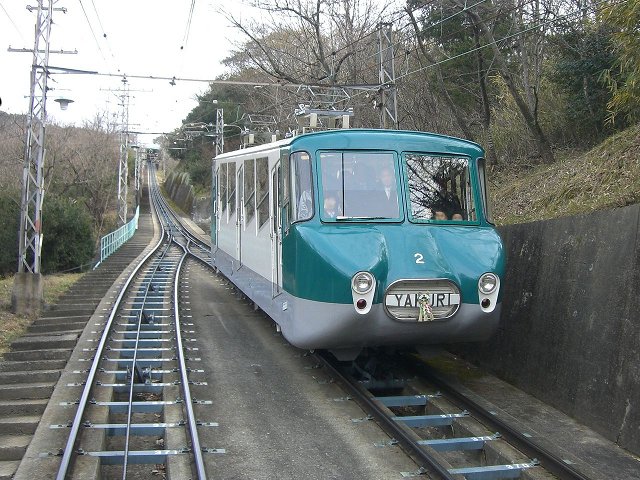
Funicular railways are found in sightseeing areas all over Japan. This is the Yakuri Cable railway that has taken visitors to Yakuri-ji Temple on Mount Goken in Takamatsu since 1931. The line is only 700 metres long, but it saves you a 167 metre vertical ascent. Yakuri-ji Temple is part of the Shikoku pilgrimage circuit of 88 temples, but pilgrims are really supposed to walk the whole route, rather than getting the train.
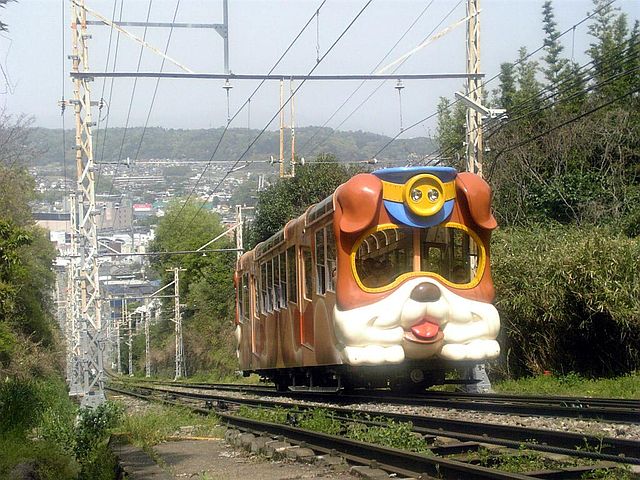
Yes, I know – this is the most ridiculous looking train you’ve ever seen, but believe it or not, it’s used by commuters every weekday. It’s the Kintetsu Ikoma Cable Line in Nara Prefecture. It connects Ikoma Station with Hozan-ji Temple, but it’s also used by local residents. From Hozan-ji Temple, you can change to another funicular to reach one of four stations further up Mount Ikoma, but only if you can bear to ride in a carriage in the shape of a cake or a piano. Right at the top of the mountain is the Skyland Ikoma amusement park, which is open only in the summer.
Commuter Trains
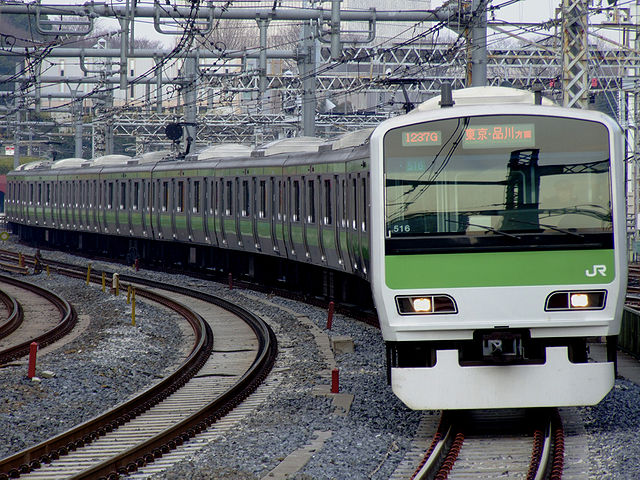
This page wouldn’t be complete without at least a couple of ordinary commuter trains. This is a Yamanote Line train, one of many that provide a service in both directions on the circular route around central Tokyo every two and half minutes. Despite the frequency and huge capacity (there are eleven carriages on each train), they’re busy most of the day, and totally jam-packed at peak times. This one line carries 3.5 million passengers on a weekday, making it busier than all twelve lines of the London Underground put together.
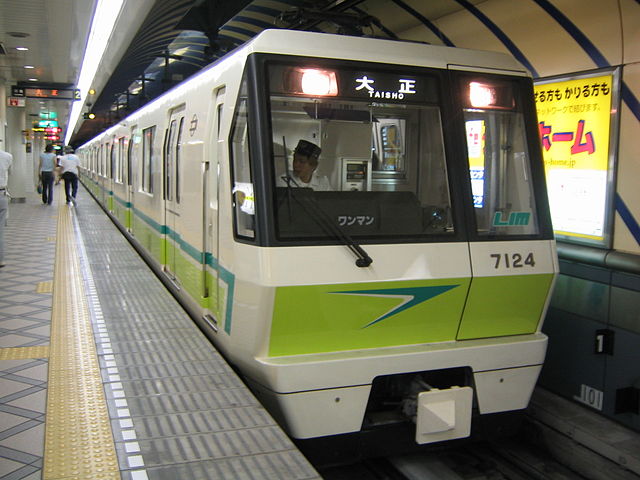
Nine cities in Japan have subway systems, from Sapporo in the north, to Fukuoka in the west. This is Osaka Municipal Subway’s Nagahori Tsurumi-ryokuchi Line. It opened in 1990, and was the first train line in Japan to use a linear motor to propel trains, rather creating traction by turning the wheels.
Railway Museums
The best place to see trains is almost certainly at work on the regular rail network, but if you’d like to see a bit more, Japan has plenty of railway museums.
The biggest and best of these is simply called ‘The Railway Museum’, and is in Saitama City, just north of Tokyo. It covers both historic engines and modern technology through its 30 or so preserved engines and a whole host of interactive exhibits. The best feature is that for an extra ¥500, you can have a go on a realistic driving simulator for either a steam train, a Shinkansen, or a Tokyo commuter train.
To get to the museum, take the Shonan-Shinjuku Line from Shinjuku Station (28 minutes, ¥450) or the Keihin-tohoku Line from Tokyo Station (42 minutes, ¥540) to Omiya Station. From there it’s just one stop (2 minutes, ¥180) on the New Shuttle Line to Tetsudo-Hakubutsukan (the museum’s own station), or about a miles walk. The museum is open 10am to 6pm every day except on Tuesdays and from December 29th to January 1st. The admission charge is ¥1,000.
If you can’t make it to Saitama, you could check out one of the other railway museums listed here.
2017 Japanese Train Calendar
This page has proved so popular, that we’ve selected the best images and made them into a calendar. You can buy a professionally made copy here, or you can download the cover and inside pages, and print themselves out to make your own. The whole calendar can be freely reproduced under the Creative Commons Attribution-Share Alike 2.0 Generic Licence.
Urban Fishing Hanafuda
